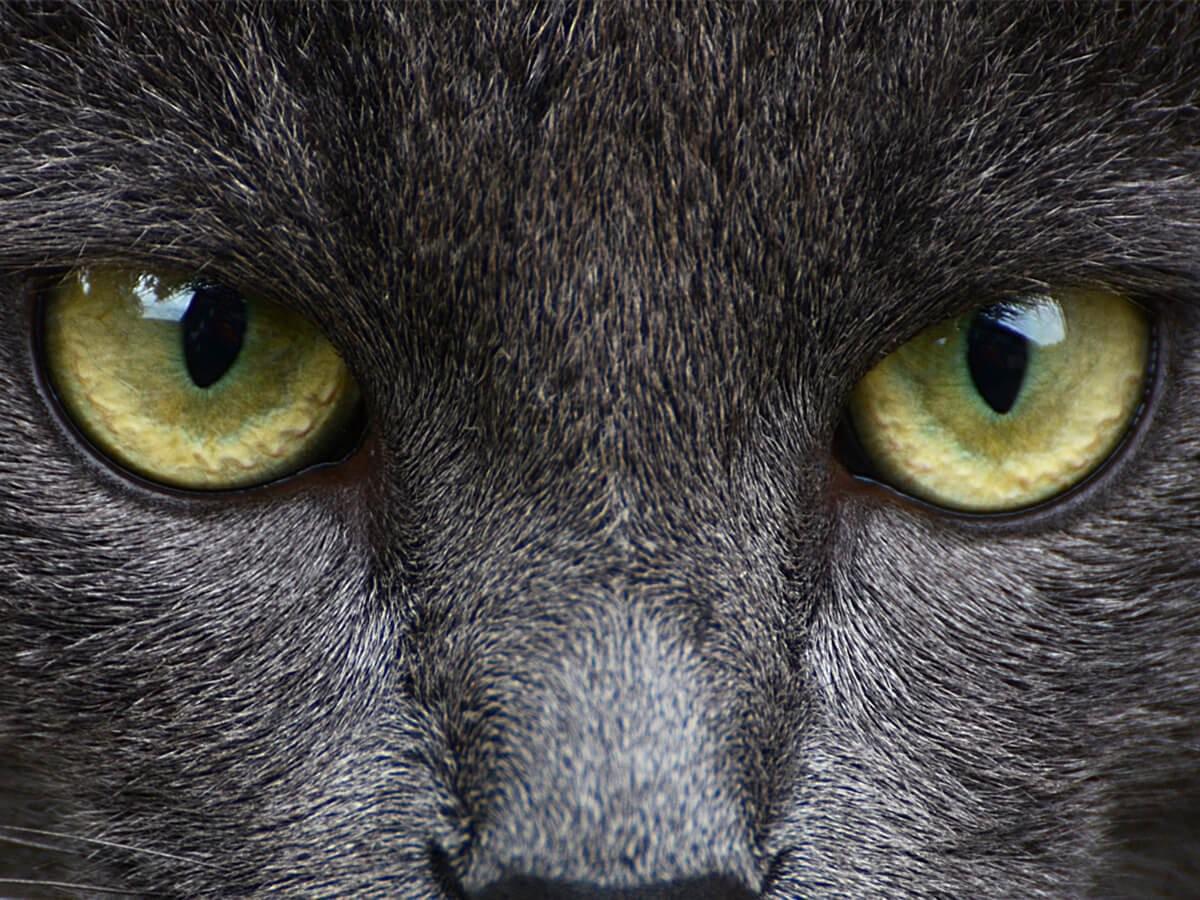We frequently talk about a bird’s-eye view or use fish-eye lenses to distort our vision, but we never seem to discuss how one of our favorite furry pets sees the world. Cats are known for their agility and hunting prowess, leading us to assume that they must have heightened visual capabilities.
You may have heard that dogs experience red-green color blindness, but what about our feline friends? The way cats saw the world used to be a mystery, but thanks to a lot of research and a few experiments, we now have a better understanding of how a cat’s eye works.
What Is Color Blindness?
Color blindness, or color deficiency, is when you are unable to see colors in the normal way. This can occur due to issues within the retina. In the retina, there are two types of cells that detect light – rods and cones. Rods detect light and dark whereas cones are responsible for detecting color. There are three cones, one that detects red, one for green, and one for blue. The brain takes the input from these cone cells to decipher color in our day-to-day life.
When a cone cell is absent or not working properly, color blindness can occur. There are different levels of color blindness, ranging from mild to severe. Someone with mild colorblindness will have all three cone cells present, but one of them doesn’t work correctly and detects a different color than normal. Severe color blindness occurs when all three cone cells are absent.
This condition typically happens at birth, although it can occur later in life. It usually affects both eyes equally and does not get more or less severe over time.
How Does A Cat’s Eye Work?
The largest difference between how a human sees and how a cat sees is the retina. As a reminder, the photoreceptors within the retina are rods and cones. Rods aid in peripheral and night vision as well as detect brightness levels whereas cones are responsible for color perception. Cats have a high concentration of rod receptors in their retina, but a low
concentration of cone receptors. Humans have the opposite. This means that while cats can see at night much better than we can, they have more trouble seeing color. Cats only need approximately 1/6th the amount of light that people do to see clearly!
In addition to their retina, cats have another structure that is thought to improve night vision. This structure is located behind the retina and is called the tapetum. Cells within the tapetum act like a mirror. They reflect the small amount of light that passes through the rods and cones back to them so that they have a second chance to pick up the small amount of light available in the dark. The cells in tapetum are what make your cat’s eyes glow slightly in the dark!
You may have always assumed that a cat’s eyesight is much better than ours. However, the truth may surprise you! Its been found that cats have a lower visual acuity than humans. What they can see at 20 feet away an average human can see at 100 or 200 feet away! Cats do have a wider visual field than us, so their peripheral vision is better than ours.
Cats have a wider visual field and a lower visual acuity, but what about their color perception?
Are Cats Color Blind?
Humans are trichromats, meaning we have three types of cones that can detect three colors. While we don’t know exactly how a cat’s color vision works, they are also considered trichromats, but they cannot detect color to the same degree that we can. Their vision is similar to that of a color-blind human. They can typically detect blue and green but have trouble with reds and pinks. These colors may appear greener to them. They also don’t see colors with the same richness in hue and saturation. Their vision is more dulled.
So, are cats rally color blind? Compared to the visible spectrum that we see, yes. However, this doesn’t mean that they are unable to see color entirely.
We may have cats beat on color vision, but their eyes work in a different way to better suit their needs. Cats are most active at dawn and dusk when it’s darker out, so it’s helpful for them that they can see so well in little to no light. For cats, seeing color is not as important as being able to see well in dim lighting.
Testing Color Vision In Cats
Cats can’t take the same color blindness test that we can. However, they still may gravitate toward beds or toys that are the same color, leading you to suspect they have a favorite color. There is no exact, straightforward way to measure their color-seeing abilities so while they could have a favorite color, they could also prefer certain beds and toys due to a number of other reasons.
Cats may not be able to see the visible light spectrum in the same way that humans can, but they are still able to see some color. Their ability to see color doesn’t impede their vision at all
and they have many other special vision features that allows them to see things that we often can’t. With the proper care your cat will surely live a happy, healthy life despite their lessened ability to clearly see specific colors.
For advice on things pet-related, check out Spot Pet Insurance’s webpage! We provide you with tons of educational materials that will help you give your pet the best care possible. We also offer personalized pet insurance plans to help keep your cat protected, happy, and healthy.
AAO
Business Insider
The Spruce Pets
Wired
